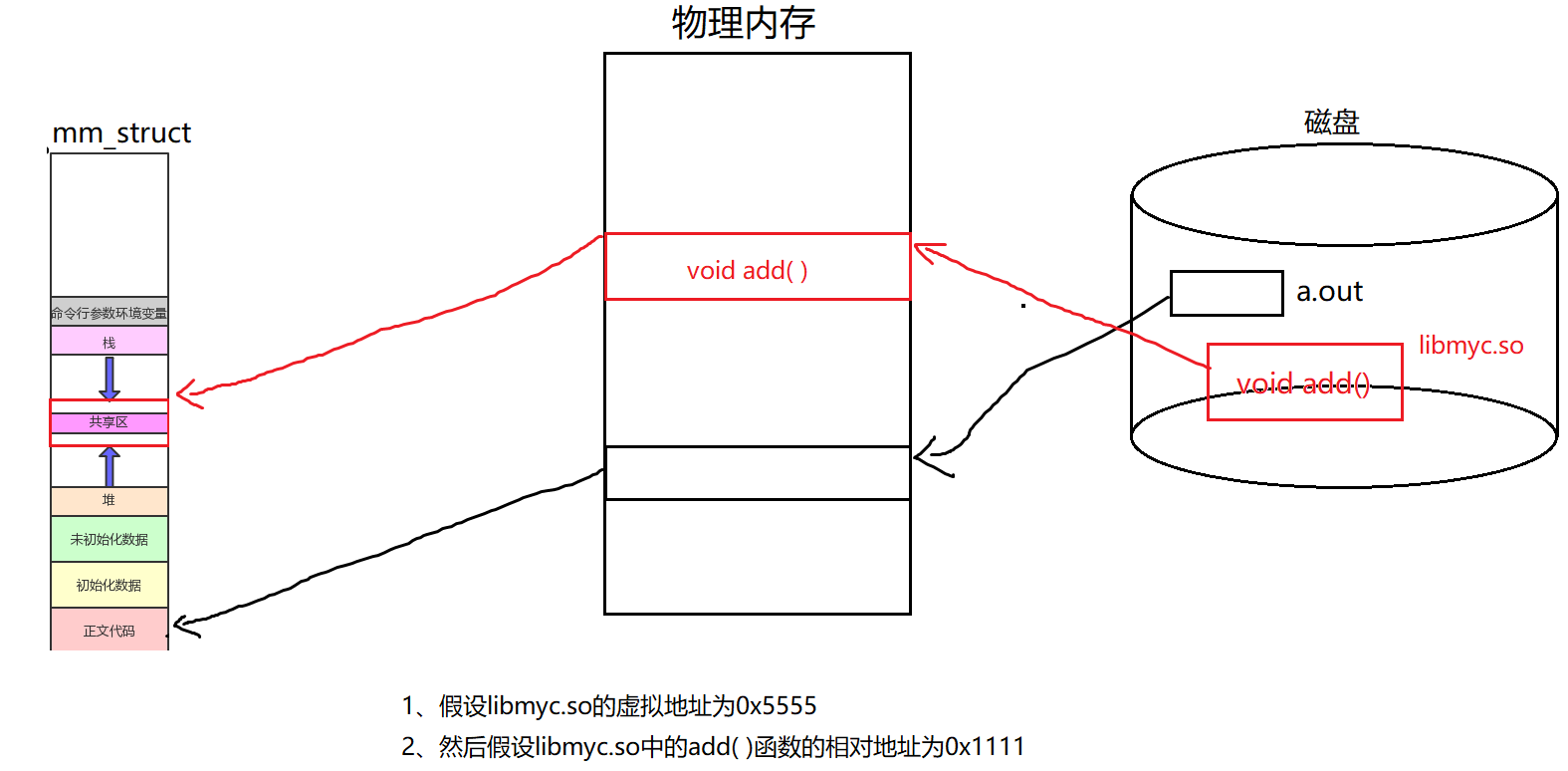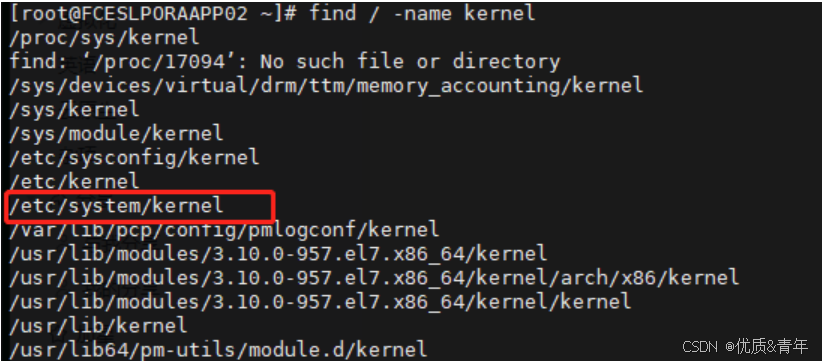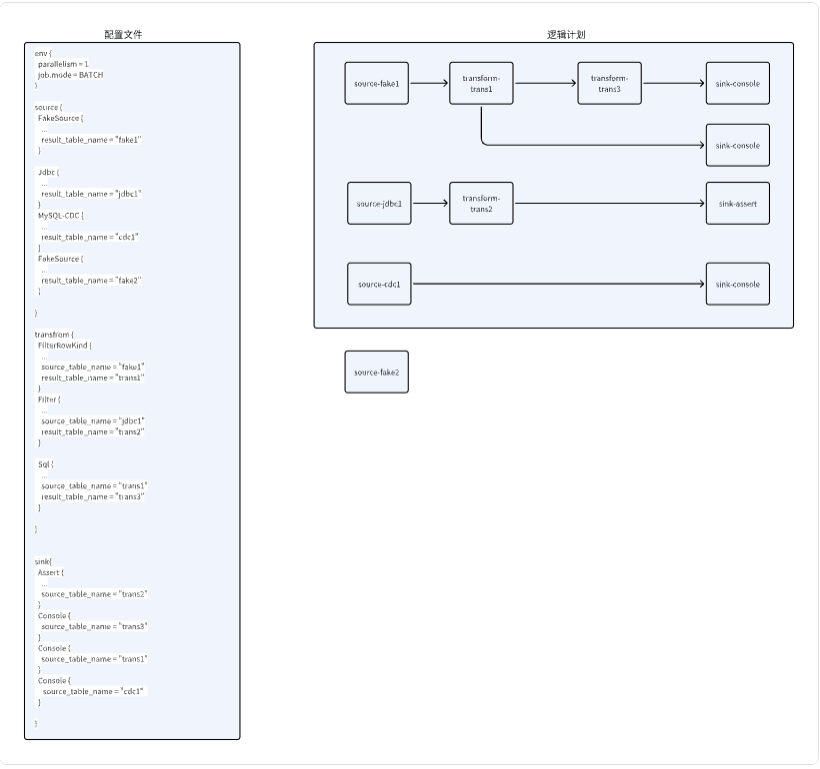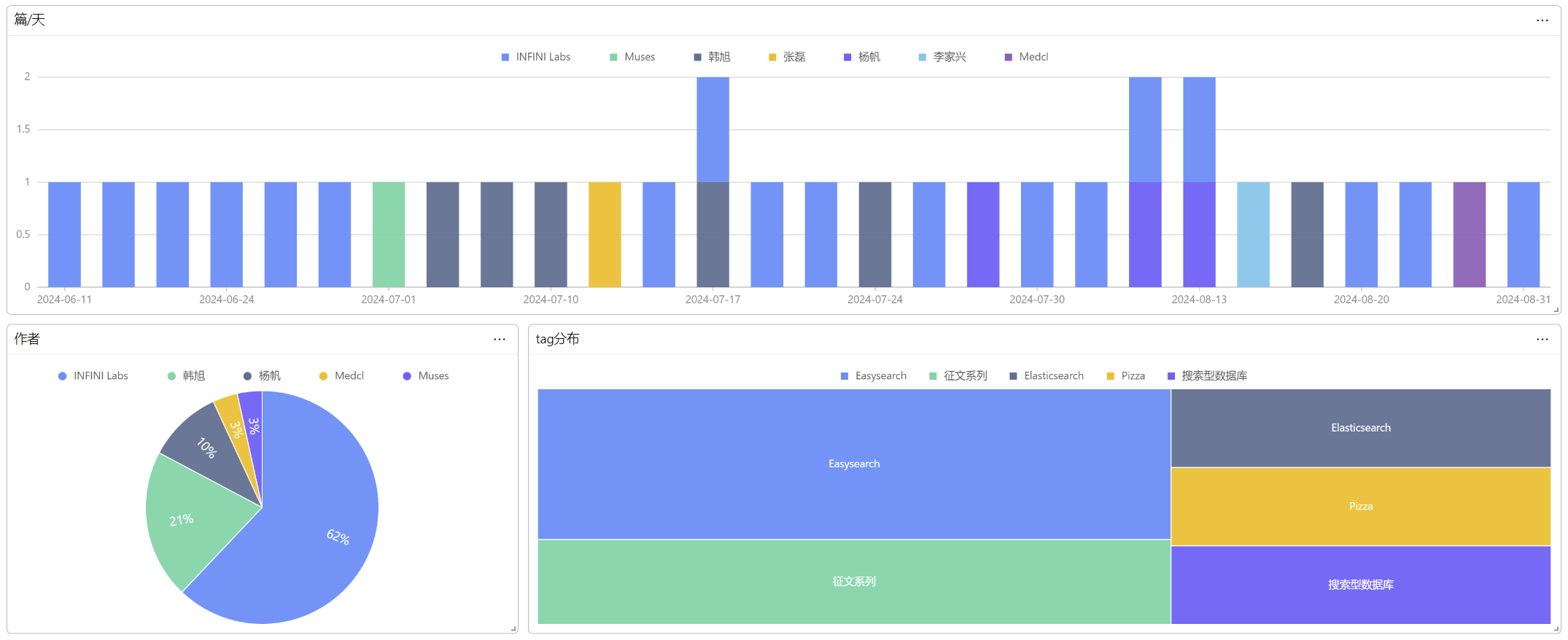注:本文主要记录一下STM32CubeMX软件的使用流程,记录内容以STM32外设(中断、I2C、USART、SPI等配置)在STM32CubeMX中的设置为主,对驱动代码编写不做记录,所以阅读本文最好有标准库开发经验。除第2节外,使用的都是韦东山老师的瑞士军刀系列。
01 软件安装
1.keil
需要安装以下支持包(keil在线安装里没有对应芯片支持包)。

2.STM32CubeMX
安装库:

3.串口助手
02 HAL库点灯操作
2.1 硬件连接
该原理图来源于学益得在线课堂教学项目《RTOS项目实战:从PCB到FreeRTOS|手写MQTT》。



DAPLINK电路连接:
(1)程序下载:
单片机SCK————DAPLINK的SCK
单片机SWK————DAPLINK的SWD
(2)串口连接
单片机TX————DAPLINK的RX
单片机RX————DAPLINK的TX
单片机GND————DAPLINK的GND
单片机3V3————DAPLINK的3V3
单片机ReSet————DAPLINK的RST
2.2 寄存器点灯
2.2.1 官网下载库文件
ST公司官网:
STSW-STM32065 - STM32F4 DSP and standard peripherals library - STMicroelectronics





2.2.2 创建工程
(1)新建工程

(2)复制启动文件到工程 


记得将文件组添加到路径中:

此时编译运行会有错误,需要进行以下处理:



(3)配置RCC时钟
如果我们需要点亮PB10引脚上的LED,让PB10等于1即可:

与STM32F1系列不同,STM32所有的GPIO都挂载再AHB总线上,所以配置GPIO的RCC时钟时,配置的是AHB的时钟。


(4)配置PB10引脚为输出模式
 (5)配置PB10引脚为推挽输出
(5)配置PB10引脚为推挽输出

(6)配置PB10引脚为输出高电平

(7)main.c
#include <stm32f411xe.h> // 我们没有把所有启动文件都复制进来,所以用<>
//#include "stm32f4xx.h" // Device header
int main()
{
//使能时钟
RCC->AHB1ENR = 0X00000002; //使能挂载在AHB上的PB10时钟
//配置引脚模式
GPIOB->MODER = 0x00100000; //配置PB10为输出模式
//配置输出模式
GPIOB->OTYPER = 0x00000000; //配置PB10引脚为推挽输出模式
//配置输出的值
GPIOB->ODR = 0x00000400; //配置PB10引脚输出高电平
while(1);
}
void SystemInit()
{
}
注意:keil代码文件最后一行必须是空行,编译才不会有问题。 下载程序时注意以下几个问题:
(1)注意切换调试工具

(2)使用微库,就是简易版本的C库、使用C语言,开发的时候需要勾选“Use MicroLIB”

2.3 CubeMX创建工程
寄存器开发:优点:程序执行的效率高;缺点:开发效率低。
库开发:标准库 HAL库(需要借助CubeMX)
新建工程



RCC(时钟源)配置


晶振频率越高,功耗越高,因此提供了两个晶振供选择。

上图这里配置的是外部晶振,我们这个案例不需要用到,因为配不配置都行。

输入100后会自动匹配其它系数 ,由内部晶振分频输出。



2.4 HAL库点灯

使用CuberMX创建完工程后,可用keil打开相应keil工程,修改源码。
main.c
/* USER CODE BEGIN Header */
/**
******************************************************************************
* @file : main.c
* @brief : Main program body
******************************************************************************
* @attention
*
* Copyright (c) 2024 STMicroelectronics.
* All rights reserved.
*
* This software is licensed under terms that can be found in the LICENSE file
* in the root directory of this software component.
* If no LICENSE file comes with this software, it is provided AS-IS.
*
******************************************************************************
*/
/* USER CODE END Header */
/* Includes ------------------------------------------------------------------*/
#include "main.h"
/* Private includes ----------------------------------------------------------*/
/* USER CODE BEGIN Includes */
/* USER CODE END Includes */
/* Private typedef -----------------------------------------------------------*/
/* USER CODE BEGIN PTD */
/* USER CODE END PTD */
/* Private define ------------------------------------------------------------*/
/* USER CODE BEGIN PD */
/* USER CODE END PD */
/* Private macro -------------------------------------------------------------*/
/* USER CODE BEGIN PM */
/* USER CODE END PM */
/* Private variables ---------------------------------------------------------*/
/* USER CODE BEGIN PV */
/* USER CODE END PV */
/* Private function prototypes -----------------------------------------------*/
void SystemClock_Config(void);
static void MX_GPIO_Init(void);
/* USER CODE BEGIN PFP */
/* USER CODE END PFP */
/* Private user code ---------------------------------------------------------*/
/* USER CODE BEGIN 0 */
/* USER CODE END 0 */
/**
* @brief The application entry point.
* @retval int
*/
int main(void)
{
/* USER CODE BEGIN 1 */
/* USER CODE END 1 */
/* MCU Configuration--------------------------------------------------------*/
/* Reset of all peripherals, Initializes the Flash interface and the Systick. */
HAL_Init();
/* USER CODE BEGIN Init */
/* USER CODE END Init */
/* Configure the system clock */
SystemClock_Config();
/* USER CODE BEGIN SysInit */
/* USER CODE END SysInit */
/* Initialize all configured peripherals */
MX_GPIO_Init();
/* USER CODE BEGIN 2 */
__HAL_RCC_GPIOB_CLK_ENABLE(); // 使能GPIOB的时钟.注意:时钟使能一定要在GPIO配置完成前
GPIO_InitTypeDef GPIO_InitStruct;
GPIO_InitStruct.Mode = GPIO_MODE_OUTPUT_PP; //设置gPIOB为推挽输出
GPIO_InitStruct.Pin = GPIO_PIN_10; //使用PB10引脚
GPIO_InitStruct.Pull = GPIO_NOPULL; //配置GPIO引脚不需要上拉
GPIO_InitStruct.Speed = GPIO_SPEED_FREQ_LOW; //配置GPIO输出速度为低速
HAL_GPIO_Init(GPIOB,&GPIO_InitStruct); //使用结构体配置GPIOB
HAL_GPIO_WritePin(GPIOB,GPIO_PIN_10,GPIO_PIN_SET); //将PB10置为高电平
/* USER CODE END 2 */
/* Infinite loop */
/* USER CODE BEGIN WHILE */
while (1)
{
/* USER CODE END WHILE */
/* USER CODE BEGIN 3 */
}
/* USER CODE END 3 */
}
/**
* @brief System Clock Configuration
* @retval None
*/
void SystemClock_Config(void)
{
RCC_OscInitTypeDef RCC_OscInitStruct = {0};
RCC_ClkInitTypeDef RCC_ClkInitStruct = {0};
/** Configure the main internal regulator output voltage
*/
__HAL_RCC_PWR_CLK_ENABLE();
__HAL_PWR_VOLTAGESCALING_CONFIG(PWR_REGULATOR_VOLTAGE_SCALE1);
/** Initializes the RCC Oscillators according to the specified parameters
* in the RCC_OscInitTypeDef structure.
*/
RCC_OscInitStruct.OscillatorType = RCC_OSCILLATORTYPE_HSI;
RCC_OscInitStruct.HSIState = RCC_HSI_ON;
RCC_OscInitStruct.HSICalibrationValue = RCC_HSICALIBRATION_DEFAULT;
RCC_OscInitStruct.PLL.PLLState = RCC_PLL_ON;
RCC_OscInitStruct.PLL.PLLSource = RCC_PLLSOURCE_HSI;
RCC_OscInitStruct.PLL.PLLM = 8;
RCC_OscInitStruct.PLL.PLLN = 100;
RCC_OscInitStruct.PLL.PLLP = RCC_PLLP_DIV2;
RCC_OscInitStruct.PLL.PLLQ = 4;
if (HAL_RCC_OscConfig(&RCC_OscInitStruct) != HAL_OK)
{
Error_Handler();
}
/** Initializes the CPU, AHB and APB buses clocks
*/
RCC_ClkInitStruct.ClockType = RCC_CLOCKTYPE_HCLK|RCC_CLOCKTYPE_SYSCLK
|RCC_CLOCKTYPE_PCLK1|RCC_CLOCKTYPE_PCLK2;
RCC_ClkInitStruct.SYSCLKSource = RCC_SYSCLKSOURCE_PLLCLK;
RCC_ClkInitStruct.AHBCLKDivider = RCC_SYSCLK_DIV1;
RCC_ClkInitStruct.APB1CLKDivider = RCC_HCLK_DIV2;
RCC_ClkInitStruct.APB2CLKDivider = RCC_HCLK_DIV1;
if (HAL_RCC_ClockConfig(&RCC_ClkInitStruct, FLASH_LATENCY_3) != HAL_OK)
{
Error_Handler();
}
}
/**
* @brief GPIO Initialization Function
* @param None
* @retval None
*/
static void MX_GPIO_Init(void)
{
/* USER CODE BEGIN MX_GPIO_Init_1 */
/* USER CODE END MX_GPIO_Init_1 */
/* GPIO Ports Clock Enable */
__HAL_RCC_GPIOC_CLK_ENABLE();
__HAL_RCC_GPIOH_CLK_ENABLE();
__HAL_RCC_GPIOA_CLK_ENABLE();
/* USER CODE BEGIN MX_GPIO_Init_2 */
/* USER CODE END MX_GPIO_Init_2 */
}
/* USER CODE BEGIN 4 */
/* USER CODE END 4 */
/**
* @brief This function is executed in case of error occurrence.
* @retval None
*/
void Error_Handler(void)
{
/* USER CODE BEGIN Error_Handler_Debug */
/* User can add his own implementation to report the HAL error return state */
__disable_irq();
while (1)
{
}
/* USER CODE END Error_Handler_Debug */
}
#ifdef USE_FULL_ASSERT
/**
* @brief Reports the name of the source file and the source line number
* where the assert_param error has occurred.
* @param file: pointer to the source file name
* @param line: assert_param error line source number
* @retval None
*/
void assert_failed(uint8_t *file, uint32_t line)
{
/* USER CODE BEGIN 6 */
/* User can add his own implementation to report the file name and line number,
ex: printf("Wrong parameters value: file %s on line %d\r\n", file, line) */
/* USER CODE END 6 */
}
#endif /* USE_FULL_ASSERT */
注意:

2.5 CubeMX配置GPIO
直接用CubeMX配置点亮LED。

这里CubeMx实现了将PB0、PB1、PB2、PB10全部置为高电平,推挽输出模式,点亮4颗LED灯。配置完后直接用keil打开下载程序即可运行
2.6 GPIO反转操作(流水灯实现)
(1)工程配置



(2)GPIO.c
/* USER CODE BEGIN Header */
/**
******************************************************************************
* @file gpio.c
* @brief This file provides code for the configuration
* of all used GPIO pins.
******************************************************************************
* @attention
*
* Copyright (c) 2024 STMicroelectronics.
* All rights reserved.
*
* This software is licensed under terms that can be found in the LICENSE file
* in the root directory of this software component.
* If no LICENSE file comes with this software, it is provided AS-IS.
*
******************************************************************************
*/
/* USER CODE END Header */
/* Includes ------------------------------------------------------------------*/
#include "gpio.h"
/* USER CODE BEGIN 0 */
/* USER CODE END 0 */
/*----------------------------------------------------------------------------*/
/* Configure GPIO */
/*----------------------------------------------------------------------------*/
/* USER CODE BEGIN 1 */
/* USER CODE END 1 */
/** Configure pins as
* Analog
* Input
* Output
* EVENT_OUT
* EXTI
*/
void MX_GPIO_Init(void)
{
/* GPIO Ports Clock Enable */
__HAL_RCC_GPIOA_CLK_ENABLE();
}
/* USER CODE BEGIN 2 */
/*LED的初始化函数*/
void My_Led_Init(void)
{
GPIO_InitTypeDef GPIO_Init_Struct;
GPIO_Init_Struct.Mode = GPIO_MODE_OUTPUT_PP; //配置GPIO为推挽输出
GPIO_Init_Struct.Pin = GPIO_PIN_10|GPIO_PIN_0|GPIO_PIN_1|GPIO_PIN_2; //选中GPIOB上的PB0 PB1 PB2 PB10
GPIO_Init_Struct.Pull = GPIO_NOPULL;
GPIO_Init_Struct.Speed = GPIO_SPEED_FREQ_LOW;
__HAL_RCC_GPIOB_CLK_ENABLE(); //开启GPIOB的时钟
//初始化 PB0 PB1 PB2 PB10
HAL_GPIO_Init(GPIOB,&GPIO_Init_Struct);
}
/*LED的翻转函数*/
void My_Led_Tooggle(void)
{
uint8_t i;
for(i=0;i<4;i++)
{
switch(i)
{
case 0:
HAL_GPIO_TogglePin(GPIOB,GPIO_PIN_10); //翻转PB10引脚的电平
HAL_Delay(500); //延时500ms
HAL_GPIO_TogglePin(GPIOB,GPIO_PIN_10); //翻转PB10引脚的电平
HAL_Delay(500);
break;
case 1:
HAL_GPIO_TogglePin(GPIOB,GPIO_PIN_2); //翻转PB2引脚的电平
HAL_Delay(500); //延时500ms
HAL_GPIO_TogglePin(GPIOB,GPIO_PIN_2); //翻转PB2引脚的电平
HAL_Delay(500); //延时500ms
break;
case 2:
HAL_GPIO_TogglePin(GPIOB,GPIO_PIN_1); //翻转PB1引脚的电平
HAL_Delay(500); //延时500ms
HAL_GPIO_TogglePin(GPIOB,GPIO_PIN_1); //翻转PB1引脚的电平
HAL_Delay(500); //延时500ms
break;
case 3:
HAL_GPIO_TogglePin(GPIOB,GPIO_PIN_0); //翻转PB0引脚的电平
HAL_Delay(500); //延时500ms
HAL_GPIO_TogglePin(GPIOB,GPIO_PIN_0); //翻转PB0引脚的电平
HAL_Delay(500); //延时500ms
break;
}
}
}
/* USER CODE END 2 */
(3)GPIO.h
/* USER CODE BEGIN Header */
/**
******************************************************************************
* @file gpio.h
* @brief This file contains all the function prototypes for
* the gpio.c file
******************************************************************************
* @attention
*
* Copyright (c) 2024 STMicroelectronics.
* All rights reserved.
*
* This software is licensed under terms that can be found in the LICENSE file
* in the root directory of this software component.
* If no LICENSE file comes with this software, it is provided AS-IS.
*
******************************************************************************
*/
/* USER CODE END Header */
/* Define to prevent recursive inclusion -------------------------------------*/
#ifndef __GPIO_H__
#define __GPIO_H__
#ifdef __cplusplus
extern "C" {
#endif
/* Includes ------------------------------------------------------------------*/
#include "main.h"
/* USER CODE BEGIN Includes */
/* USER CODE END Includes */
/* USER CODE BEGIN Private defines */
/* USER CODE END Private defines */
void MX_GPIO_Init(void);
/* USER CODE BEGIN Prototypes */
void My_Led_Init(void);
void My_Led_Tooggle(void);
/* USER CODE END Prototypes */
#ifdef __cplusplus
}
#endif
#endif /*__ GPIO_H__ */
(4)main.c
/* USER CODE BEGIN Header */
/**
******************************************************************************
* @file : main.c
* @brief : Main program body
******************************************************************************
* @attention
*
* Copyright (c) 2024 STMicroelectronics.
* All rights reserved.
*
* This software is licensed under terms that can be found in the LICENSE file
* in the root directory of this software component.
* If no LICENSE file comes with this software, it is provided AS-IS.
*
******************************************************************************
*/
/* USER CODE END Header */
/* Includes ------------------------------------------------------------------*/
#include "main.h"
#include "gpio.h"
/* Private includes ----------------------------------------------------------*/
/* USER CODE BEGIN Includes */
/* USER CODE END Includes */
/* Private typedef -----------------------------------------------------------*/
/* USER CODE BEGIN PTD */
/* USER CODE END PTD */
/* Private define ------------------------------------------------------------*/
/* USER CODE BEGIN PD */
/* USER CODE END PD */
/* Private macro -------------------------------------------------------------*/
/* USER CODE BEGIN PM */
/* USER CODE END PM */
/* Private variables ---------------------------------------------------------*/
/* USER CODE BEGIN PV */
/* USER CODE END PV */
/* Private function prototypes -----------------------------------------------*/
void SystemClock_Config(void);
/* USER CODE BEGIN PFP */
/* USER CODE END PFP */
/* Private user code ---------------------------------------------------------*/
/* USER CODE BEGIN 0 */
/* USER CODE END 0 */
/**
* @brief The application entry point.
* @retval int
*/
int main(void)
{
/* USER CODE BEGIN 1 */
/* USER CODE END 1 */
/* MCU Configuration--------------------------------------------------------*/
/* Reset of all peripherals, Initializes the Flash interface and the Systick. */
HAL_Init();
/* USER CODE BEGIN Init */
/* USER CODE END Init */
/* Configure the system clock */
SystemClock_Config();
/* USER CODE BEGIN SysInit */
/* USER CODE END SysInit */
/* Initialize all configured peripherals */
MX_GPIO_Init();
/* USER CODE BEGIN 2 */
My_Led_Init();
/* USER CODE END 2 */
/* Infinite loop */
/* USER CODE BEGIN WHILE */
while (1)
{
/* USER CODE END WHILE */
My_Led_Tooggle();
/* USER CODE BEGIN 3 */
}
/* USER CODE END 3 */
}
/**
* @brief System Clock Configuration
* @retval None
*/
void SystemClock_Config(void)
{
RCC_OscInitTypeDef RCC_OscInitStruct = {0};
RCC_ClkInitTypeDef RCC_ClkInitStruct = {0};
/** Configure the main internal regulator output voltage
*/
__HAL_RCC_PWR_CLK_ENABLE();
__HAL_PWR_VOLTAGESCALING_CONFIG(PWR_REGULATOR_VOLTAGE_SCALE1);
/** Initializes the RCC Oscillators according to the specified parameters
* in the RCC_OscInitTypeDef structure.
*/
RCC_OscInitStruct.OscillatorType = RCC_OSCILLATORTYPE_HSI;
RCC_OscInitStruct.HSIState = RCC_HSI_ON;
RCC_OscInitStruct.HSICalibrationValue = RCC_HSICALIBRATION_DEFAULT;
RCC_OscInitStruct.PLL.PLLState = RCC_PLL_ON;
RCC_OscInitStruct.PLL.PLLSource = RCC_PLLSOURCE_HSI;
RCC_OscInitStruct.PLL.PLLM = 8;
RCC_OscInitStruct.PLL.PLLN = 100;
RCC_OscInitStruct.PLL.PLLP = RCC_PLLP_DIV2;
RCC_OscInitStruct.PLL.PLLQ = 4;
if (HAL_RCC_OscConfig(&RCC_OscInitStruct) != HAL_OK)
{
Error_Handler();
}
/** Initializes the CPU, AHB and APB buses clocks
*/
RCC_ClkInitStruct.ClockType = RCC_CLOCKTYPE_HCLK|RCC_CLOCKTYPE_SYSCLK
|RCC_CLOCKTYPE_PCLK1|RCC_CLOCKTYPE_PCLK2;
RCC_ClkInitStruct.SYSCLKSource = RCC_SYSCLKSOURCE_PLLCLK;
RCC_ClkInitStruct.AHBCLKDivider = RCC_SYSCLK_DIV1;
RCC_ClkInitStruct.APB1CLKDivider = RCC_HCLK_DIV2;
RCC_ClkInitStruct.APB2CLKDivider = RCC_HCLK_DIV1;
if (HAL_RCC_ClockConfig(&RCC_ClkInitStruct, FLASH_LATENCY_3) != HAL_OK)
{
Error_Handler();
}
}
/* USER CODE BEGIN 4 */
/* USER CODE END 4 */
/**
* @brief This function is executed in case of error occurrence.
* @retval None
*/
void Error_Handler(void)
{
/* USER CODE BEGIN Error_Handler_Debug */
/* User can add his own implementation to report the HAL error return state */
__disable_irq();
while (1)
{
}
/* USER CODE END Error_Handler_Debug */
}
#ifdef USE_FULL_ASSERT
/**
* @brief Reports the name of the source file and the source line number
* where the assert_param error has occurred.
* @param file: pointer to the source file name
* @param line: assert_param error line source number
* @retval None
*/
void assert_failed(uint8_t *file, uint32_t line)
{
/* USER CODE BEGIN 6 */
/* User can add his own implementation to report the file name and line number,
ex: printf("Wrong parameters value: file %s on line %d\r\n", file, line) */
/* USER CODE END 6 */
}
#endif /* USE_FULL_ASSERT */
2.7 GPIO输入(两个按键开关灯)
1个按键开灯,另一个关灯
(1)新建3.key工程




(2)GPIO.c
/* USER CODE BEGIN Header */
/**
******************************************************************************
* @file gpio.c
* @brief This file provides code for the configuration
* of all used GPIO pins.
******************************************************************************
* @attention
*
* Copyright (c) 2024 STMicroelectronics.
* All rights reserved.
*
* This software is licensed under terms that can be found in the LICENSE file
* in the root directory of this software component.
* If no LICENSE file comes with this software, it is provided AS-IS.
*
******************************************************************************
*/
/* USER CODE END Header */
/* Includes ------------------------------------------------------------------*/
#include "gpio.h"
/* USER CODE BEGIN 0 */
/* USER CODE END 0 */
/*----------------------------------------------------------------------------*/
/* Configure GPIO */
/*----------------------------------------------------------------------------*/
/* USER CODE BEGIN 1 */
/* USER CODE END 1 */
/** Configure pins as
* Analog
* Input
* Output
* EVENT_OUT
* EXTI
*/
void MX_GPIO_Init(void)
{
/* GPIO Ports Clock Enable */
__HAL_RCC_GPIOA_CLK_ENABLE();
}
/* USER CODE BEGIN 2 */
/* LED初始化函数 */
void My_Led_Init(void)
{
GPIO_InitTypeDef GPIO_Init_Structure;
GPIO_Init_Structure.Mode = GPIO_MODE_OUTPUT_PP; //配置推挽输出
GPIO_Init_Structure.Pin = GPIO_PIN_10;
GPIO_Init_Structure.Pull = GPIO_NOPULL; //无需上下拉
GPIO_Init_Structure.Speed = GPIO_SPEED_FREQ_LOW;
__HAL_RCC_GPIOB_CLK_ENABLE(); //开启GPIOB的时钟
HAL_GPIO_Init(GPIOB,&GPIO_Init_Structure);
}
/* 按键初始化函数 */
void My_Key_Init(void)
{
GPIO_InitTypeDef GPIO_Init_Structure;
GPIO_Init_Structure.Mode = GPIO_MODE_INPUT; //输入模式,检测按键状态
GPIO_Init_Structure.Pin = GPIO_PIN_4 | GPIO_PIN_5;
GPIO_Init_Structure.Pull = GPIO_NOPULL; //无需上下拉
GPIO_Init_Structure.Speed = GPIO_SPEED_FREQ_LOW;
// __HAL_RCC_GPIOA_CLK_ENABLE(); //在CubeMX自动生成的MX_GPIO_Init已经开启GPIOA的时钟,无需再次开启
HAL_GPIO_Init(GPIOA,&GPIO_Init_Structure);
}
/* 开灯函数 */
void My_Led_ON()
{
HAL_GPIO_WritePin(GPIOB,GPIO_PIN_10,GPIO_PIN_SET); //给PB10一个高电平,开灯
}
/* 关灯函数 */
void My_Led_OFF()
{
HAL_GPIO_WritePin(GPIOB,GPIO_PIN_10,GPIO_PIN_RESET); //给PB10一个低电平,关灯
}
/* 按键扫描函数 */
uint8_t My_Key_Scan(void)
{
GPIO_PinState state = HAL_GPIO_ReadPin(GPIOA,GPIO_PIN_4); //检测接在PA4上按键状态
if(state == GPIO_PIN_RESET) //如果按键脚低电平,按键按下
{
HAL_Delay(20); //延时20ms,软件消抖
if(state == GPIO_PIN_RESET)
return 1;
}
state = HAL_GPIO_ReadPin(GPIOA,GPIO_PIN_5); //检测接在PA5上按键状态
if(state == GPIO_PIN_RESET) //如果按键脚低电平,按键按下
{
HAL_Delay(20); //延时20ms,软件消抖
if(state == GPIO_PIN_RESET)
return 2;
}
return 0; //没有按键按下时候返回0
}
/* USER CODE END 2 */
(3)GPIO.h
/* USER CODE BEGIN Header */
/**
******************************************************************************
* @file gpio.h
* @brief This file contains all the function prototypes for
* the gpio.c file
******************************************************************************
* @attention
*
* Copyright (c) 2024 STMicroelectronics.
* All rights reserved.
*
* This software is licensed under terms that can be found in the LICENSE file
* in the root directory of this software component.
* If no LICENSE file comes with this software, it is provided AS-IS.
*
******************************************************************************
*/
/* USER CODE END Header */
/* Define to prevent recursive inclusion -------------------------------------*/
#ifndef __GPIO_H__
#define __GPIO_H__
#ifdef __cplusplus
extern "C" {
#endif
/* Includes ------------------------------------------------------------------*/
#include "main.h"
/* USER CODE BEGIN Includes */
/* USER CODE END Includes */
/* USER CODE BEGIN Private defines */
/* USER CODE END Private defines */
void MX_GPIO_Init(void);
/* USER CODE BEGIN Prototypes */
/* LED初始化函数 */
void My_Led_Init(void);
/* 按键初始化函数 */
void My_Key_Init(void);
/* 开灯函数 */
void My_Led_ON();
/* 关灯函数 */
void My_Led_OFF();
/* 按键扫描函数 */
uint8_t My_Key_Scan(void);
/* USER CODE END Prototypes */
#ifdef __cplusplus
}
#endif
#endif /*__ GPIO_H__ */
(4)main.c
/* USER CODE BEGIN Header */
/**
******************************************************************************
* @file : main.c
* @brief : Main program body
******************************************************************************
* @attention
*
* Copyright (c) 2024 STMicroelectronics.
* All rights reserved.
*
* This software is licensed under terms that can be found in the LICENSE file
* in the root directory of this software component.
* If no LICENSE file comes with this software, it is provided AS-IS.
*
******************************************************************************
*/
/* USER CODE END Header */
/* Includes ------------------------------------------------------------------*/
#include "main.h"
#include "gpio.h"
/* Private includes ----------------------------------------------------------*/
/* USER CODE BEGIN Includes */
/* USER CODE END Includes */
/* Private typedef -----------------------------------------------------------*/
/* USER CODE BEGIN PTD */
/* USER CODE END PTD */
/* Private define ------------------------------------------------------------*/
/* USER CODE BEGIN PD */
/* USER CODE END PD */
/* Private macro -------------------------------------------------------------*/
/* USER CODE BEGIN PM */
/* USER CODE END PM */
/* Private variables ---------------------------------------------------------*/
/* USER CODE BEGIN PV */
/* USER CODE END PV */
/* Private function prototypes -----------------------------------------------*/
void SystemClock_Config(void);
/* USER CODE BEGIN PFP */
/* USER CODE END PFP */
/* Private user code ---------------------------------------------------------*/
/* USER CODE BEGIN 0 */
/* USER CODE END 0 */
/**
* @brief The application entry point.
* @retval int
*/
int main(void)
{
/* USER CODE BEGIN 1 */
/* USER CODE END 1 */
/* MCU Configuration--------------------------------------------------------*/
/* Reset of all peripherals, Initializes the Flash interface and the Systick. */
HAL_Init();
/* USER CODE BEGIN Init */
/* USER CODE END Init */
/* Configure the system clock */
SystemClock_Config();
/* USER CODE BEGIN SysInit */
/* USER CODE END SysInit */
/* Initialize all configured peripherals */
MX_GPIO_Init();
/* USER CODE BEGIN 2 */
My_Led_Init();
My_Key_Init();
/* USER CODE END 2 */
/* Infinite loop */
/* USER CODE BEGIN WHILE */
while (1)
{
/* USER CODE END WHILE */
switch(My_Key_Scan()) //获取键值
{
case 1:
{
My_Led_ON(); //开灯
break;
}
case 2:
{
My_Led_OFF(); //关灯
break;
}
case 0:
break;
}
/* USER CODE BEGIN 3 */
}
/* USER CODE END 3 */
}
/**
* @brief System Clock Configuration
* @retval None
*/
void SystemClock_Config(void)
{
RCC_OscInitTypeDef RCC_OscInitStruct = {0};
RCC_ClkInitTypeDef RCC_ClkInitStruct = {0};
/** Configure the main internal regulator output voltage
*/
__HAL_RCC_PWR_CLK_ENABLE();
__HAL_PWR_VOLTAGESCALING_CONFIG(PWR_REGULATOR_VOLTAGE_SCALE1);
/** Initializes the RCC Oscillators according to the specified parameters
* in the RCC_OscInitTypeDef structure.
*/
RCC_OscInitStruct.OscillatorType = RCC_OSCILLATORTYPE_HSI;
RCC_OscInitStruct.HSIState = RCC_HSI_ON;
RCC_OscInitStruct.HSICalibrationValue = RCC_HSICALIBRATION_DEFAULT;
RCC_OscInitStruct.PLL.PLLState = RCC_PLL_ON;
RCC_OscInitStruct.PLL.PLLSource = RCC_PLLSOURCE_HSI;
RCC_OscInitStruct.PLL.PLLM = 8;
RCC_OscInitStruct.PLL.PLLN = 100;
RCC_OscInitStruct.PLL.PLLP = RCC_PLLP_DIV2;
RCC_OscInitStruct.PLL.PLLQ = 4;
if (HAL_RCC_OscConfig(&RCC_OscInitStruct) != HAL_OK)
{
Error_Handler();
}
/** Initializes the CPU, AHB and APB buses clocks
*/
RCC_ClkInitStruct.ClockType = RCC_CLOCKTYPE_HCLK|RCC_CLOCKTYPE_SYSCLK
|RCC_CLOCKTYPE_PCLK1|RCC_CLOCKTYPE_PCLK2;
RCC_ClkInitStruct.SYSCLKSource = RCC_SYSCLKSOURCE_PLLCLK;
RCC_ClkInitStruct.AHBCLKDivider = RCC_SYSCLK_DIV1;
RCC_ClkInitStruct.APB1CLKDivider = RCC_HCLK_DIV2;
RCC_ClkInitStruct.APB2CLKDivider = RCC_HCLK_DIV1;
if (HAL_RCC_ClockConfig(&RCC_ClkInitStruct, FLASH_LATENCY_3) != HAL_OK)
{
Error_Handler();
}
}
/* USER CODE BEGIN 4 */
/* USER CODE END 4 */
/**
* @brief This function is executed in case of error occurrence.
* @retval None
*/
void Error_Handler(void)
{
/* USER CODE BEGIN Error_Handler_Debug */
/* User can add his own implementation to report the HAL error return state */
__disable_irq();
while (1)
{
}
/* USER CODE END Error_Handler_Debug */
}
#ifdef USE_FULL_ASSERT
/**
* @brief Reports the name of the source file and the source line number
* where the assert_param error has occurred.
* @param file: pointer to the source file name
* @param line: assert_param error line source number
* @retval None
*/
void assert_failed(uint8_t *file, uint32_t line)
{
/* USER CODE BEGIN 6 */
/* User can add his own implementation to report the file name and line number,
ex: printf("Wrong parameters value: file %s on line %d\r\n", file, line) */
/* USER CODE END 6 */
}
#endif /* USE_FULL_ASSERT */
上面我们学习了HAL库开发的基本操作,下面我们就来学习HAL库开发的外设操作吧。
03 GPIO中断编程
这节我们主要记录一下STM32CubeMX中中断配置。

(1)配置相应引脚为中断模式

(2)配置中断引脚触发方式和工作模式

(3)使能中断向量控制器

(4)设置中断优先级分组
江协科技STM32学习笔记(第04章 EXTI外部中断)_江协科技笔记-CSDN博客



勾选与不勾选的区别就是:左边是勾选上的,外设GPIO初始化完成后才初始化NVIC,右边是未勾选的,在GPIO里面就初始化了NVIC。
配置完以上几步就可以生成代码了。
(5)编写中断函数

使用HAL库配置的所有中断最终都会调用这个弱函数,我们和中断相关的代码都放这个函数里就可以了。
执行过程为:


 在这个回调函数里编写我们自己的中断控制程序。
在这个回调函数里编写我们自己的中断控制程序。
 04 使用OLED进行调试
04 使用OLED进行调试
OLED使用I2C进行通信,所以这节的目的是为了了解I2C引脚的配置。


这里STM32CubeMX里就配置好了。
将OLED的驱动程序添加进工程里就可以使用oled了。


使用就是很常规的调用驱动里相关函数就行,就不记录了。
05 按键抖动处理

处理按键抖动的时候我们可能会使用延时函数,隔一段时间再判断一下电平,但是中断函数的要求是快进快出,在中断函数里使用延时函数,显示有点违背了这条准则,本节就是记录如何解决这个问题。 使用定时器来解决这个问题,定时器是如以下3个图这样来调用的。

这个定时器每1ms产生一次中断, 增加一个计数值。

使用以下函数获得计数值。

先定义相关的变量。

struct soft_timer{
uint32_t timeout; //超时时间
void *args; //给成员func用的参数
void (*func)(void *); //超时函数
};
/* USER CODE END PTD */
/* Private define ------------------------------------------------------------*/
/* USER CODE BEGIN PD */
/* USER CODE END PD */
/* Private macro -------------------------------------------------------------*/
/* USER CODE BEGIN PM */
/* USER CODE END PM */
/* Private variables ---------------------------------------------------------*/
/* USER CODE BEGIN PV */
int g_key_cnt = 0;
void key_timerout_func(void *args);
struct soft_timer key_timer = {~0,NULL,key_timerout_func}; //按键超时时间结构体定义只要触发中断,将超时时间设置为当前时间+10。

void HAL_GPIO_EXTI_Callback(uint16_t GPIO_Pin)
{
if(GPIO_Pin == GPIO_PIN_14)
{
mod_timer(&key_timer,10); //中断函数里修改超时时间为当前时间+10
}
}
void mod_timer(struct soft_timer *pTimer,uint32_t timeout)
{
pTimer->timeout = HAL_GetTick()+timeout; //超时时间等于当前计数值加上10,就是每次触发中断都等待10ms再检测
}
SysTick_Handler()会每隔1ms计数一次,并且检查定时时间有没有到。

void SysTick_Handler(void)
{
/* USER CODE BEGIN SysTick_IRQn 0 */
/* USER CODE END SysTick_IRQn 0 */
HAL_IncTick(); //没过1ms都会产生一次中断
/* USER CODE BEGIN SysTick_IRQn 1 */
extern void check_timer(void);
check_timer(); //调用check_timer检查按键定时器的时间有没有到了
/* USER CODE END SysTick_IRQn 1 */
}
void check_timer(void)
{
if(key_timer.timeout<=HAL_GetTick())
/*如果按键定时器的时间是否到了,这里key_timer.timeout的最大值是最后一次按键抖动触发的中断时间+10,
key_timer.timeout<=HAL_GetTick()就移位着我的按键已经达到稳定状态了
*/
{
key_timer.func(key_timer.args); //按键达到稳定状态后把案件定时器状态归位
}
}
void key_timerout_func(void *args)
{
g_key_cnt++; // 统计按键按下的次数
key_timer.timeout= ~0; //每次计数完都给按键定时时间复位
}完整代码:
main.c:
/* USER CODE BEGIN Header */
/**
******************************************************************************
* @file : main.c
* @brief : Main program body
******************************************************************************
* @attention
*
* Copyright (c) 2024 STMicroelectronics.
* All rights reserved.
*
* This software is licensed under terms that can be found in the LICENSE file
* in the root directory of this software component.
* If no LICENSE file comes with this software, it is provided AS-IS.
*
******************************************************************************
*/
/* USER CODE END Header */
/* Includes ------------------------------------------------------------------*/
#include "main.h"
#include "i2c.h"
#include "gpio.h"
/* Private includes ----------------------------------------------------------*/
/* USER CODE BEGIN Includes */
#include "driver_oled.h"
/* USER CODE END Includes */
/* Private typedef -----------------------------------------------------------*/
/* USER CODE BEGIN PTD */
struct soft_timer{
uint32_t timeout; //超时时间
void *args; //给成员func用的参数
void (*func)(void *); //超时函数
};
/* USER CODE END PTD */
/* Private define ------------------------------------------------------------*/
/* USER CODE BEGIN PD */
/* USER CODE END PD */
/* Private macro -------------------------------------------------------------*/
/* USER CODE BEGIN PM */
/* USER CODE END PM */
/* Private variables ---------------------------------------------------------*/
/* USER CODE BEGIN PV */
int g_key_cnt = 0;
void key_timerout_func(void *args);
struct soft_timer key_timer = {~0,NULL,key_timerout_func}; //按键超时时间结构体定义
void key_timerout_func(void *args)
{
g_key_cnt++; // 统计按键按下的次数
key_timer.timeout= ~0; //每次计数完都给按键定时时间复位
}
void mod_timer(struct soft_timer *pTimer,uint32_t timeout)
{
pTimer->timeout = HAL_GetTick()+timeout; //超时时间等于当前计数值加上10,就是每次触发中断都等待10ms再检测
}
void check_timer(void)
{
if(key_timer.timeout<=HAL_GetTick())
/*如果按键定时器的时间是否到了,这里key_timer.timeout的最大值是最后一次按键抖动触发的中断时间+10,
key_timer.timeout<=HAL_GetTick()就移位着我的按键已经达到稳定状态了
*/
{
key_timer.func(key_timer.args); //按键达到稳定状态后把案件定时器状态归位
}
}
void HAL_GPIO_EXTI_Callback(uint16_t GPIO_Pin)
{
if(GPIO_Pin == GPIO_PIN_14)
{
mod_timer(&key_timer,10); //中断函数里修改超时时间为当前时间+10
}
}
/* USER CODE END PV */
/* Private function prototypes -----------------------------------------------*/
void SystemClock_Config(void);
/* USER CODE BEGIN PFP */
/* USER CODE END PFP */
/* Private user code ---------------------------------------------------------*/
/* USER CODE BEGIN 0 */
/* USER CODE END 0 */
/**
* @brief The application entry point.
* @retval int
*/
int main(void)
{
/* USER CODE BEGIN 1 */
/* USER CODE END 1 */
/* MCU Configuration--------------------------------------------------------*/
/* Reset of all peripherals, Initializes the Flash interface and the Systick. */
HAL_Init();
/* USER CODE BEGIN Init */
/* USER CODE END Init */
/* Configure the system clock */
SystemClock_Config();
/* USER CODE BEGIN SysInit */
/* USER CODE END SysInit */
/* Initialize all configured peripherals */
MX_GPIO_Init();
MX_I2C1_Init();
/* USER CODE BEGIN 2 */
OLED_Init();
OLED_Clear();
OLED_PrintString(0, 4, "Key ISR cnt = ");
/* USER CODE END 2 */
/* Infinite loop */
/* USER CODE BEGIN WHILE */
while (1)
{
// HAL_GPIO_WritePin(GPIOC,GPIO_PIN_13,GPIO_PIN_SET); //PC13口置高电平,点亮LED
// HAL_Delay(500); //延时500ms
// HAL_GPIO_WritePin(GPIOC,GPIO_PIN_13,GPIO_PIN_RESET); //PC13口置高电平,点亮LED
// HAL_Delay(500);
OLED_PrintSignedVal(14, 4, g_key_cnt);
/* USER CODE END WHILE */
/* USER CODE BEGIN 3 */
}
/* USER CODE END 3 */
}
/**
* @brief System Clock Configuration
* @retval None
*/
void SystemClock_Config(void)
{
RCC_OscInitTypeDef RCC_OscInitStruct = {0};
RCC_ClkInitTypeDef RCC_ClkInitStruct = {0};
/** Initializes the RCC Oscillators according to the specified parameters
* in the RCC_OscInitTypeDef structure.
*/
RCC_OscInitStruct.OscillatorType = RCC_OSCILLATORTYPE_HSE;
RCC_OscInitStruct.HSEState = RCC_HSE_ON;
RCC_OscInitStruct.HSEPredivValue = RCC_HSE_PREDIV_DIV1;
RCC_OscInitStruct.HSIState = RCC_HSI_ON;
RCC_OscInitStruct.PLL.PLLState = RCC_PLL_ON;
RCC_OscInitStruct.PLL.PLLSource = RCC_PLLSOURCE_HSE;
RCC_OscInitStruct.PLL.PLLMUL = RCC_PLL_MUL9;
if (HAL_RCC_OscConfig(&RCC_OscInitStruct) != HAL_OK)
{
Error_Handler();
}
/** Initializes the CPU, AHB and APB buses clocks
*/
RCC_ClkInitStruct.ClockType = RCC_CLOCKTYPE_HCLK|RCC_CLOCKTYPE_SYSCLK
|RCC_CLOCKTYPE_PCLK1|RCC_CLOCKTYPE_PCLK2;
RCC_ClkInitStruct.SYSCLKSource = RCC_SYSCLKSOURCE_PLLCLK;
RCC_ClkInitStruct.AHBCLKDivider = RCC_SYSCLK_DIV1;
RCC_ClkInitStruct.APB1CLKDivider = RCC_HCLK_DIV2;
RCC_ClkInitStruct.APB2CLKDivider = RCC_HCLK_DIV1;
if (HAL_RCC_ClockConfig(&RCC_ClkInitStruct, FLASH_LATENCY_2) != HAL_OK)
{
Error_Handler();
}
}
/* USER CODE BEGIN 4 */
/* USER CODE END 4 */
/**
* @brief This function is executed in case of error occurrence.
* @retval None
*/
void Error_Handler(void)
{
/* USER CODE BEGIN Error_Handler_Debug */
/* User can add his own implementation to report the HAL error return state */
__disable_irq();
while (1)
{
}
/* USER CODE END Error_Handler_Debug */
}
#ifdef USE_FULL_ASSERT
/**
* @brief Reports the name of the source file and the source line number
* where the assert_param error has occurred.
* @param file: pointer to the source file name
* @param line: assert_param error line source number
* @retval None
*/
void assert_failed(uint8_t *file, uint32_t line)
{
/* USER CODE BEGIN 6 */
/* User can add his own implementation to report the file name and line number,
ex: printf("Wrong parameters value: file %s on line %d\r\n", file, line) */
/* USER CODE END 6 */
}
#endif /* USE_FULL_ASSERT */
stm32f1xx_it.c :
/* USER CODE BEGIN Header */
/**
******************************************************************************
* @file stm32f1xx_it.c
* @brief Interrupt Service Routines.
******************************************************************************
* @attention
*
* Copyright (c) 2024 STMicroelectronics.
* All rights reserved.
*
* This software is licensed under terms that can be found in the LICENSE file
* in the root directory of this software component.
* If no LICENSE file comes with this software, it is provided AS-IS.
*
******************************************************************************
*/
/* USER CODE END Header */
/* Includes ------------------------------------------------------------------*/
#include "main.h"
#include "stm32f1xx_it.h"
/* Private includes ----------------------------------------------------------*/
/* USER CODE BEGIN Includes */
/* USER CODE END Includes */
/* Private typedef -----------------------------------------------------------*/
/* USER CODE BEGIN TD */
/* USER CODE END TD */
/* Private define ------------------------------------------------------------*/
/* USER CODE BEGIN PD */
/* USER CODE END PD */
/* Private macro -------------------------------------------------------------*/
/* USER CODE BEGIN PM */
/* USER CODE END PM */
/* Private variables ---------------------------------------------------------*/
/* USER CODE BEGIN PV */
/* USER CODE END PV */
/* Private function prototypes -----------------------------------------------*/
/* USER CODE BEGIN PFP */
/* USER CODE END PFP */
/* Private user code ---------------------------------------------------------*/
/* USER CODE BEGIN 0 */
/* USER CODE END 0 */
/* External variables --------------------------------------------------------*/
/* USER CODE BEGIN EV */
/* USER CODE END EV */
/******************************************************************************/
/* Cortex-M3 Processor Interruption and Exception Handlers */
/******************************************************************************/
/**
* @brief This function handles Non maskable interrupt.
*/
void NMI_Handler(void)
{
/* USER CODE BEGIN NonMaskableInt_IRQn 0 */
/* USER CODE END NonMaskableInt_IRQn 0 */
/* USER CODE BEGIN NonMaskableInt_IRQn 1 */
while (1)
{
}
/* USER CODE END NonMaskableInt_IRQn 1 */
}
/**
* @brief This function handles Hard fault interrupt.
*/
void HardFault_Handler(void)
{
/* USER CODE BEGIN HardFault_IRQn 0 */
/* USER CODE END HardFault_IRQn 0 */
while (1)
{
/* USER CODE BEGIN W1_HardFault_IRQn 0 */
/* USER CODE END W1_HardFault_IRQn 0 */
}
}
/**
* @brief This function handles Memory management fault.
*/
void MemManage_Handler(void)
{
/* USER CODE BEGIN MemoryManagement_IRQn 0 */
/* USER CODE END MemoryManagement_IRQn 0 */
while (1)
{
/* USER CODE BEGIN W1_MemoryManagement_IRQn 0 */
/* USER CODE END W1_MemoryManagement_IRQn 0 */
}
}
/**
* @brief This function handles Prefetch fault, memory access fault.
*/
void BusFault_Handler(void)
{
/* USER CODE BEGIN BusFault_IRQn 0 */
/* USER CODE END BusFault_IRQn 0 */
while (1)
{
/* USER CODE BEGIN W1_BusFault_IRQn 0 */
/* USER CODE END W1_BusFault_IRQn 0 */
}
}
/**
* @brief This function handles Undefined instruction or illegal state.
*/
void UsageFault_Handler(void)
{
/* USER CODE BEGIN UsageFault_IRQn 0 */
/* USER CODE END UsageFault_IRQn 0 */
while (1)
{
/* USER CODE BEGIN W1_UsageFault_IRQn 0 */
/* USER CODE END W1_UsageFault_IRQn 0 */
}
}
/**
* @brief This function handles System service call via SWI instruction.
*/
void SVC_Handler(void)
{
/* USER CODE BEGIN SVCall_IRQn 0 */
/* USER CODE END SVCall_IRQn 0 */
/* USER CODE BEGIN SVCall_IRQn 1 */
/* USER CODE END SVCall_IRQn 1 */
}
/**
* @brief This function handles Debug monitor.
*/
void DebugMon_Handler(void)
{
/* USER CODE BEGIN DebugMonitor_IRQn 0 */
/* USER CODE END DebugMonitor_IRQn 0 */
/* USER CODE BEGIN DebugMonitor_IRQn 1 */
/* USER CODE END DebugMonitor_IRQn 1 */
}
/**
* @brief This function handles Pendable request for system service.
*/
void PendSV_Handler(void)
{
/* USER CODE BEGIN PendSV_IRQn 0 */
/* USER CODE END PendSV_IRQn 0 */
/* USER CODE BEGIN PendSV_IRQn 1 */
/* USER CODE END PendSV_IRQn 1 */
}
/**
* @brief This function handles System tick timer.
*/
void SysTick_Handler(void)
{
/* USER CODE BEGIN SysTick_IRQn 0 */
/* USER CODE END SysTick_IRQn 0 */
HAL_IncTick(); //没过1ms都会产生一次中断
/* USER CODE BEGIN SysTick_IRQn 1 */
extern void check_timer(void);
check_timer(); //调用check_timer检查按键定时器的时间有没有到了
/* USER CODE END SysTick_IRQn 1 */
}
/******************************************************************************/
/* STM32F1xx Peripheral Interrupt Handlers */
/* Add here the Interrupt Handlers for the used peripherals. */
/* For the available peripheral interrupt handler names, */
/* please refer to the startup file (startup_stm32f1xx.s). */
/******************************************************************************/
/**
* @brief This function handles EXTI line[15:10] interrupts.
*/
void EXTI15_10_IRQHandler(void)
{
/* USER CODE BEGIN EXTI15_10_IRQn 0 */
/* USER CODE END EXTI15_10_IRQn 0 */
HAL_GPIO_EXTI_IRQHandler(GPIO_PIN_14);
/* USER CODE BEGIN EXTI15_10_IRQn 1 */
/* USER CODE END EXTI15_10_IRQn 1 */
}
/* USER CODE BEGIN 1 */
/* USER CODE END 1 */








![[Web安全 网络安全]-文件包含漏洞](https://i-blog.csdnimg.cn/direct/6eedfe3cfad8479596f129284aa92d01.png)










